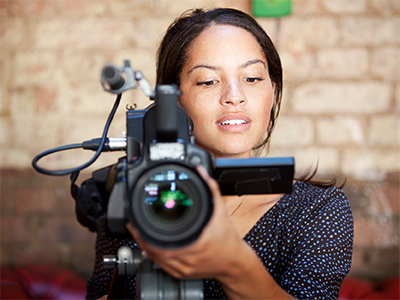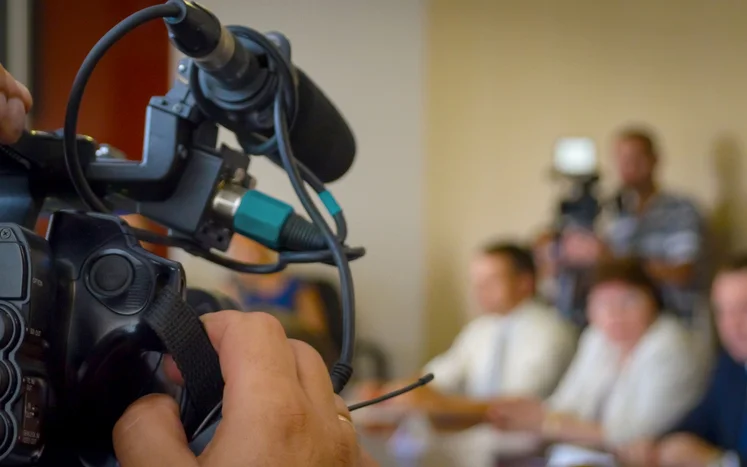The Duty of Legal Videography in Recording Depositions and Tests
The Duty of Legal Videography in Recording Depositions and Tests
Blog Article
Essential Facets of Lawful Videography for Effective Documents
Lawful videography plays a critical role in the documentation of vital events within the justice system, where precision and quality are critical. Key aspects such as the implementation of high-definition video cameras, adherence to legal criteria, and effective place hunting substantially affect the top quality and integrity of the footage. Furthermore, a videographer's expertise and interest to information can greatly enhance the evidentiary worth of the recorded product. As we discover these necessary elements, it comes to be noticeable that the nuances of this technique can have far-ranging implications for legal outcomes. What might those ramifications involve?
Relevance of Legal Videography
Lawful videography plays an important role in the judicial process by offering a reputable aesthetic record of statements, depositions, and other substantial occasions. This aesthetic documents serves several vital features, most especially improving the trustworthiness of evidence offered in court. Unlike written transcripts, video recordings catch non-verbal signs, such as body movement and psychological responses, which can substantially influence a jury's understanding of a witness's integrity and reliability.
In addition, legal videography aids in maintaining the honesty of complicated cases, making certain that nuances are precisely stood for. This becomes especially essential in situations entailing specialist testimony, where visual help can elucidate detailed concepts that may be challenging to convey with text alone.
In addition, the usage of videography can enhance test procedures. By permitting jurors to check out recordings instead of relying exclusively on online testament, the procedure can come to be extra effective and much less at risk to misinterpretation.
Technical Needs
To efficiently capture premium video clip in a lawful setting, specific technological demands need to be met. Primarily, the selection of camera is essential; it ought to have high-def capabilities, ideally 1080p or higher, to make certain clarity in visual paperwork. Furthermore, the electronic camera ought to have a reliable zoom function to capture information from various distances without compromising picture quality.
Lighting is another vital facet. Natural light is favored, however supplemental lights may be essential to get rid of darkness and make certain all individuals are effectively illuminated (Legal Videography). Soft, diffused lighting can aid produce a professional appearance while avoiding rough contrasts

Lastly, secure recording tools is necessary. A tripod or various other stablizing equipment need to be used to prevent shaky video footage, which could take away from the professionalism and trust of the documents. Satisfying these technological demands will significantly enhance the quality and performance of lawful videography.
Compliance and Legal Criteria
In the world of legal videography, adherence to conformity and lawful standards is vital to guarantee the integrity and admissibility of taped products in court process. Lawful videographers must be well-versed in the appropriate legislations and regulations controling the paperwork of proof. This includes recognizing the rules of proof, which dictate exactly how video clip recordings can be made use of in court, as well as privacy legislations that protect the legal rights of individuals captured on video.
Furthermore, videographers ought to acquire appropriate authorization from all events included in the recording procedure. This not only cultivates transparency however also safeguards versus possible legal effects. Conformity with state-specific regulations is similarly essential, as the legal landscape differs substantially throughout jurisdictions.
In addition, preserving high requirements of technological high quality is necessary, as poor audio or visual high quality can bring about challenges relating to the trustworthiness of the video footage. Videographers need to also keep careful records of the chain of wardship for all video clip products, guaranteeing that they can demonstrate the credibility and honesty of the recordings if questioned in court. Essentially, compliance with lawful requirements develops the foundation of reliable and reliable lawful videography.
Best Practices for Videographers
Sticking to compliance and lawful criteria establishes a solid structure for efficient lawful videography, however best practices additionally enhance the high quality and dependability of recorded materials. First of all, videographers must make use of high-grade devices, including cams with enough resolution and sound recording tools that minimize background noise. This ensures clearness in both aesthetic and acoustic components, which is vital for lawful documentation.
Second of all, proper lights is important to avoid shadows or overexposure, thus keeping the stability of the video. Videographers ought to hunt the area ahead of time to determine ideal lighting problems, changing as essential.
Furthermore, cautious framework and make-up are essential. Subjects ought to be focused within the structure, and any type of relevant materials or displays should be plainly visible. This not just help in clarity but additionally helps in communicating context during legal process.
Furthermore, maintaining a neutral behavior and staying clear of personal prejudices while recording improves the professionalism of the videographer. Attention to detail in modifying, including smooth changes and clear labeling of files, makes certain that the last item is not only sleek but additionally very easy to browse for legal groups. Following these ideal practices ultimately supports the goals of lawful documentation.
Enhancing Evidentiary Value
Enhancing the evidentiary worth of lawful videography needs a calculated method that prioritizes both credibility and clearness. Legal videographers need to make sure that the video documentation accurately shows the conditions, events, or testaments being recorded. This starts with the option of high-quality devices that captures clear sound and aesthetic aspects, minimizing distortion or interference that may weaken reliability.
Furthermore, precise focus to detail is critical. Videographers ought to Get More Information establish a steady camera position, use proper lights, and prevent any kind of unneeded edits that could be regarded as modifying the initial content. Maintaining a neutral point of view throughout recording aids preserve the authenticity of the proof.
Furthermore, appropriate documents of the recording process-- consisting of day, time, area, and any type of pertinent contextual information-- can substantially boost the evidentiary weight of the video clip. This metadata works as advice a crucial referral point for credibility.

Final Thought

Lawful videography plays a pivotal function in the documents of vital occasions within the justice system, where precision and clarity are vital.In the realm of legal videography, adherence to conformity and legal requirements is vital to guarantee the stability and admissibility of recorded products in court proceedings. Legal Videography. In essence, conformity with lawful requirements creates the foundation of trusted and reliable lawful videography
Sticking to conformity and legal standards develops a strong structure for reliable legal videography, yet finest practices even more enhance the quality and dependability of recorded materials.In conclusion, the relevance of lawful videography exists in its read capability to provide clear, reputable paperwork for legal process.
Report this page